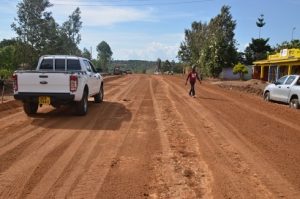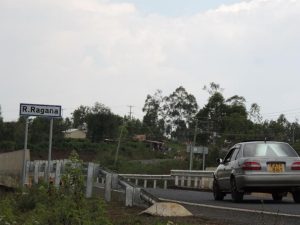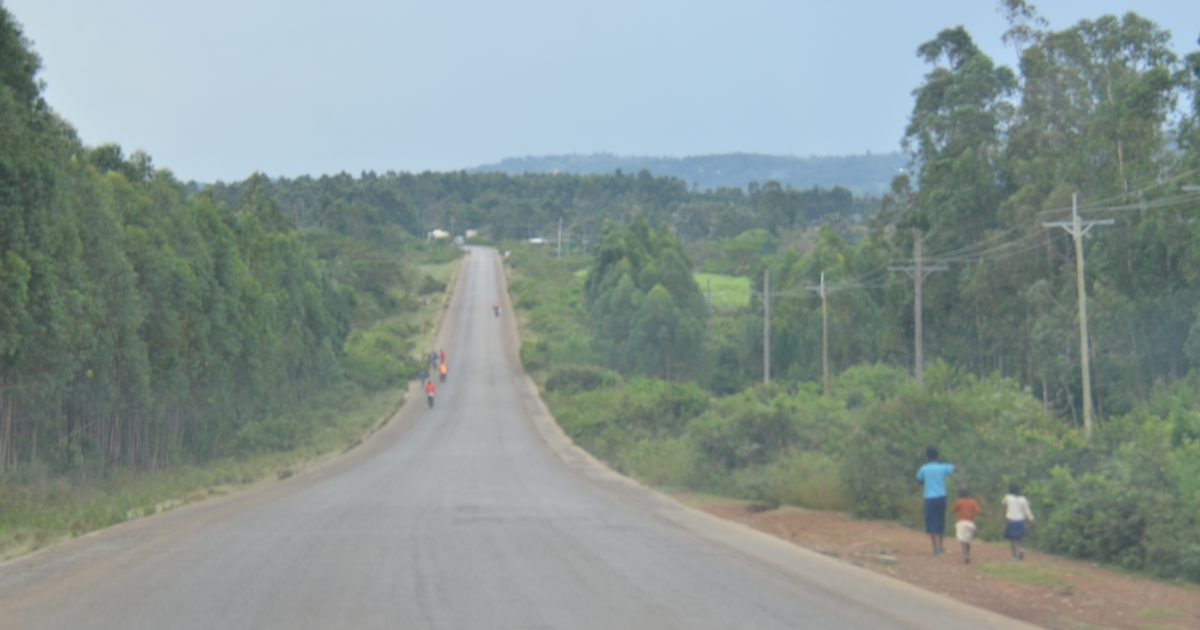The Kehancha-Migori and Kehancha-Isebania roads in Migori County are classic examples of good roads in a region once neglected by the past regimes, the Kenya News Agency can confidently confirm.
However, during the current regime under President Uhuru Kenyatta’s watch, a good number of the once impassable roads in the area have now received perfect facelifts after millions of shillings were directed allocated to improve accessibility to rural human establishments.

The two roads form the gate way to the Maasai Mara Game Reserves for tourists approaching from the western part of the country and the only links through which tobacco, maize, millet and sweet potatoes from Kuria and Tanzania, reach Nairobi and other towns in Kenya and beyond.
It used to take motorists more than two hours to go through craters and mud, just to cover the 30 kilometers stretch of the earth road between Migori and Kehancha and, 22 kilometers between Kehancha and Isebania border town to reach the then district headquarters, now Kuria West Sub-County Headquarters.
Before the tarmacking of the two roads, the rule, “Keep Left”, did not apply and couldn’t apply as motorists looked for smooth passages, even outside the road stretch into peoples’ farms, to find where wheels could roll.
Overtaking vehicles on the roads was another herculean task for motorists as it was done on either side depending on a motorist’s judgement.
For many years, farmers who transported produce to markets had to live with unfulfilled promises from the sitting government officials and local leaders.
Every elected leader who drove through the roads tended to promise government’s commitment to tarmac the two road stretches to make ease communication in the region.
Speaking in the area in 2005, Former Roads Minister Raila Odinga said plans had been concluded to have the Migori-Kehancha road tarmacked. He announced then that the road would be extended all the way to Muhuru Bay in Migori and through Maasai Mara to Nairobi.
According to Raila who served in the President Mwai Kibaki’s regime as Roads Minister, work was to begin almost immediately given that the money had been partially sourced. The wildly cheering crowd was told that the poor condition of the road would soon be a thing of the past.
The good plans and baskets of promises however did not come to fruition during the full period of President Kibaki’s rule to the chagrin of the local people. No work commenced, save for bush clearing carried out by the public works team.
But several years down the memory lane today, the road network in the region is now superb and movement of wananchi to and from the outside world has been made better in the region.
“We are happy with the government for bettering the status of the roads in Kuria land and particularly making Kegonga and Ntimaru accessible by all means of transport,” said former Civic leader, Samuel Kerioba.
In an interview with KNA recently, Mr Kerioba vividly remembers how robbers used to waylay slow moving motorists along the two major roads, rob them of their valuables and sometimes maim and kill motorists and passengers who refused to hand over what they had.
At the same time, commuters along the routes were to dig deep into their pockets to enable them pay the high fares that had come along with the deteriorating condition of the two roads.
Says Mrs Anne Ghati: “A year ago, we were paying Sh300 from Kehancha to Migori; we are now relieved to pay between Sh70 and Sh100 for the same journey depending on what means you are using- a bus or matatu, due to the current good state of the road.”
Local leaders claim the region had then been neglected for a long time by the past regimes to the effect that it was one of two or so regions in the country whose administrative headquarters were not linked by bitumen roads.
Former Councilor in the defunct Kehancha Municipal Council, Peter Kihita, says the region’s development had been greatly hurt by the poor state of the roads despite being endowed with resources and hardworking people.
“For an area to open up for development it must have good road network and an un-interrupted power supply. Thanks to the Jubilee government has already supplied us with power and has greatly upgraded very important roads in this region to assist farmers take their farm produce to markets,” said Kitita during an interview.
Save for the 25 Migori – Isebania Highway, which traverses Kuria West Sub-County in its far west region, the bigger part of the hitherto Kuria land now split into Kuria West and East was, for a long period since Kenya’s independence, popular with impassable earth roads.

The all-time-cash-strapped Kehancha Municipal Council was unable to improve all the roads spread in its jurisdiction, giving commuters and farmers problems in terms of accessibility to markets within and outside the area.
However, hope was not lost to the local people that the region would one day enjoy good roads and as per their daily prayers, their wish came to pass when President Uhuru Kenyatta climbed to throne in 2013.
Currently the State, in collaboration with the World Bank (WB) and African Development Bank (ADB) is implementing a road facelift in the region estimated to totaling over Sh15 billion, a move that is expected to further open up the southern corridor linking up Kenya, Tanzania, and Democratic Republic of Congo and beyond.
Already, a road-web project is designed to run all the way from Isebania border town through Maasai Mara to Mulot, Narok and finally to Nairobi, a distance of about 130 kilometers.
The super road will be linked at various points with several under grade tarmac roads from surrounding towns and trading centres, providing good accessibility opportunities to surrounding communities.
Out to benefit from the super road project are Muhuru town in Nyatike Sub-County, which will be linked to the super highway through Migori town. Other towns are Kehancha and Ikerege, all in Kuria West Sub-County and Awendo town, to be linked through Mariwa and Ogwethi Maasai trading centres.
Former Kehancha town mayor Paul Gitwekere says the construction of the highway would automatically open up development in the two Kuria Sub Counties since accessibility would now be possible to all local market centres and the two Sub-County headquarters of Kehancha and Kegonga.
“We look forward to breaking the age-old transport problem with the coming of the project. Farmers would now enjoy ferrying their produce to local and outside markets as more people would want to invest in the area due to good road networks,” he said.
By George Agimba




